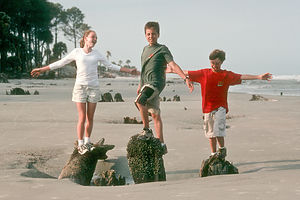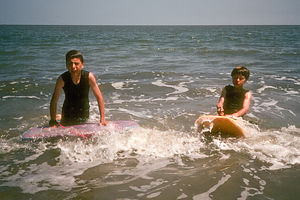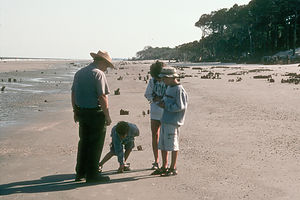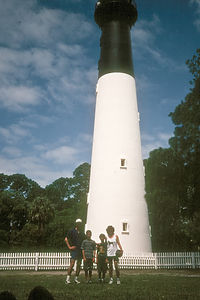- Home
- About
- Map
- Trips
- Bringing Boat West
- Migration West
- Solo Motorcycle Ride
- Final Family XC Trip
- Colorado Rockies
- Graduates' XC Trip
- Yosemite & Nevada
- Colorado & Utah
- Best of Utah
- Southern Loop
- Pacific Northwest
- Northern Loop
- Los Angeles to NYC
- East Coast Trips
- Martha's Vineyard
- 1 Week in Quebec
- Southeast Coast
- NH Backpacking
- Martha's Vineyard
- Canadian Maritimes
- Ocracoke Island
- Edisto Island
- First Landing '02
- Hunting Island '02
- Stowe in Winter
- Hunting Island '01
- Lake Placid
- Chesapeake
- Provincetown
- Hunting Island '00
- Acadia in Winter
- Boston Suburbs
- Niagara Falls
- First Landing '99
- Cape Hatteras
- West Coast Trips
- Burning Man
- Utah Off-Roading
- Maui
- Mojave 4WD Course
- Colorado River Rafting
- Bishop & Death Valley
- Kauai
- Yosemite Fall
- Utah Off-Road
- Lost Coast
- Yosemite Valley
- Arizona and New Mexico
- Pescadero & Capitola
- Bishop & Death Valley
- San Diego, Anza Borrego, Joshua Tree
- Carmel
- Death Valley in Fall
- Yosemite in the Fall
- Pacific Northwest
- Utah Off-Roading
- Southern CA Deserts
- Yosemite & Covid
- Lake Powell Covid
- Eastern Sierra & Covid
- Bishop & Death Valley
- Central & SE Oregon
- Mojave Road
- Eastern Sierra
- Trinity Alps
- Tuolumne Meadows
- Lake Powell Boating
- Eastern Sierra
- Yosemite Winter
- Hawaii
- 4WD Eastern Sierra
- 4WD Death Valley +
- Southern CA Deserts
- Christmas in Tahoe
- Yosemite & Pinnacles
- Totality
- Yosemite & Sierra
- Yosemite Christmas
- Yosemite, San Diego
- Yosemite & North CA
- Seattle to Sierra
- Southwest Deserts
- Yosemite & Sierra
- Pacific Northwest
- Yosemite & South CA
- Pacific Northwest
- Northern California
- Southern Alaska
- Vancouver Island
- International Trips
- Index
- Tips
- Books
- Photos/Videos
- Search
- Contact
Hunting Island State Park, SC
Saturday, April 21, 2001 - 4:00am by Lolo
186 miles and 4 hours from our last stop - 7 night stay
Travelogue
 Whitney, Andrew and TommyI almost hesitate to let RVers know about Hunting Island because I selfishly want to keep it to ourselves. However, since I highly doubt that my reflections are going to rock the travel industry, I’ll take my chances.
Whitney, Andrew and TommyI almost hesitate to let RVers know about Hunting Island because I selfishly want to keep it to ourselves. However, since I highly doubt that my reflections are going to rock the travel industry, I’ll take my chances.
Six-mile long Hunting Island, just off the coast of Beaufort, South Carolina, is our idea of an RVers paradise. The entire island is a state park, which means there is no commercialization of any sort. There are miles of beautiful beaches, even more miles of bike trails, an historic lighthouse to climb, and best of all, campsites set among the palmettos right at the edge of the beach. When we closed our eyes at night, we were lulled to sleep by the surf and the breezes through the palmetto leaves. In fact, just writing this makes me want to be there now.
We had spent last year’s Spring Break here, and had loved it so much that we were back. This time we brought along another family with kids the same age almost as ours. Our boys had practically grown up with Whitney and Kyle and we had spent several family outings and vacations together. Every time they got together, they had a great time. I must admit though that it did change the dynamics of the trip a bit. The boys spent a lot less time with us and more time playing with each other, but that was fine. It gave me more time to relax and read the supply of books I brought, and it was fun just watching them have such a great time. And I could always depend on them coming back to us when they were hungry.
 Herb with boys by lagoonThis was a very different type of vacation for us—no itineraries or long driving days, just a beach, our bikes, running sneakers, and some good books. It was wonderful. We spent 7 nights on the island and never had any urge to leave it to explore the mainland. Gradually, we settled into a routine.
Herb with boys by lagoonThis was a very different type of vacation for us—no itineraries or long driving days, just a beach, our bikes, running sneakers, and some good books. It was wonderful. We spent 7 nights on the island and never had any urge to leave it to explore the mainland. Gradually, we settled into a routine.
The mornings were for exercising or exploring. For such a small island, there were really a lot of biking opportunities. There were miles of trails through the forests and along the marshes and lagoon. Even the beaches were fair game. Unlike the soft-sand beaches of the north, these beaches had sand hard enough to ride bikes on. With all these choices, we would have to make the decision each morning as to whether to start out along the beach or to take the forest trail that began near the entrance to the campground. Usually we would head out one way and return the other, making it a different adventure each day.
 Boys boogie boardingThe kids had a lot of fun on the forest trail, hopping over logs and maneuvering the sharp turns between the tree trunks along the edge of the trail. It was just about the right amount of difficulty to make it very doable, but yet somewhat exciting for them. After about a mile or so, this trail comes out into the parking lot by the Visitor Center. Here we would always stop to look for the alligator that hung out in the small swamp across the way. He looked pretty lazy lying out there in the sun.
Boys boogie boardingThe kids had a lot of fun on the forest trail, hopping over logs and maneuvering the sharp turns between the tree trunks along the edge of the trail. It was just about the right amount of difficulty to make it very doable, but yet somewhat exciting for them. After about a mile or so, this trail comes out into the parking lot by the Visitor Center. Here we would always stop to look for the alligator that hung out in the small swamp across the way. He looked pretty lazy lying out there in the sun.
From the Visitor Center, you could either go out onto the beach and back or continue on the Nature Trail through more forest. The Nature Trail eventually led to the Fishing Pier and Nature Center at the very southern tip of the island. Here we would lock up our bikes and walk out onto the 1,000 foot pier that jutted out into the inlet separating Hunting and Fripp Islands. We would also spend some time in the Nature Center looking at the tanks of snakes, turtles, and other reptiles.
 Ranger tour on beachFrom the Nature Center, you could either go out on the road and along the salt marsh area or back along the lagoon that cuts into the southern end of the island. The salt marshes were especially nice in the early evening because they were on the western part of the island, and it was lovely to watch the sun set over them. There is a long boardwalk across the marsh that leads to a viewing platform where you can watch the multitude of birds that call this place home.
Ranger tour on beachFrom the Nature Center, you could either go out on the road and along the salt marsh area or back along the lagoon that cuts into the southern end of the island. The salt marshes were especially nice in the early evening because they were on the western part of the island, and it was lovely to watch the sun set over them. There is a long boardwalk across the marsh that leads to a viewing platform where you can watch the multitude of birds that call this place home.
The alternative lagoon route back is probably my favorite. The trail traces the edge of the lagoon, which cuts for a mile or two into the southern end of the island. It was so quiet and remote here. The only sound was our tires riding over the dried palmetto leaves that covered the trails. At any moment I half expected to see Gilligan and the Skipper.
From the end of the lagoon, we would usually cut over to the beach and ride along the hard sand, weaving amongst the driftwood and palmetto stumps. Just short of our campground was the historic Hunting Island lighthouse, where we would often stop to climb its 167 spirally steps to look out over our island paradise. Then it was just a short distance further on the beach before we would spot our trusty motorhome, nestled contentedly under the palmettos.
 Lolo with boys on beachAnd that was just our mornings. We would generally spend our afternoons lounging on the beach right in front of our motorhome. Even there, there were lots of choices, both in the water and out. When they wanted to stay dry, the kids played football or flew their stunt kites. Also, there was a little pool of warm water left behind when the tide went out. The water in that pool must have been 85 degrees. Tommy and Kyle spent endless hours lying in that pool, building sand-drip castles along its edge.
Lolo with boys on beachAnd that was just our mornings. We would generally spend our afternoons lounging on the beach right in front of our motorhome. Even there, there were lots of choices, both in the water and out. When they wanted to stay dry, the kids played football or flew their stunt kites. Also, there was a little pool of warm water left behind when the tide went out. The water in that pool must have been 85 degrees. Tommy and Kyle spent endless hours lying in that pool, building sand-drip castles along its edge.
However, probably the most time was spent boogie boarding. Hunting Island doesn’t have a particularly big surf, but its waves start out far and roll along without breaking for a very long ride all the way up onto the shore. The kids must have boogie boarded for hours. The gentle wave action along the water’s edge also made for some good skimboarding.
Later in the afternoons, we would often join the ranger-guided walks that started at the campground office and explored the various habitats near the campground. I’m glad we discovered these early in the week, because the kids really enjoyed these informative walks. By the end of the week, they knew a whole lot more about the creatures on the beach than they did when we arrived.
Evenings were lovely as well—dinner, a glass of wine, a stroll on the beach, and then falling asleep to the sound of the surf.
It doesn’t get much better.
Description
 Andrew, Whitney and Tom on beachHunting Island State Park is located on a 3-mile barrier island just east of Beaufort, South Carolina. It offers one of the most tropical settings to be found on the entire South Carolina coast. This 5000-acre park contains 3 miles of pristine sandy beaches along the Atlantic shoreline, salt marshes, a lagoon, and a dense forest of oak, bayberry, and palmetto. Storms have eroded much of the shoreline, bringing the lush forests closer to the sea.
Andrew, Whitney and Tom on beachHunting Island State Park is located on a 3-mile barrier island just east of Beaufort, South Carolina. It offers one of the most tropical settings to be found on the entire South Carolina coast. This 5000-acre park contains 3 miles of pristine sandy beaches along the Atlantic shoreline, salt marshes, a lagoon, and a dense forest of oak, bayberry, and palmetto. Storms have eroded much of the shoreline, bringing the lush forests closer to the sea.
A good place to begin a trip to the island is at the Visitor Center, which has exhibits on the cultural history of the island, its beach habitats, and the historic lighthouse. Right across from the Visitor Center is a small swamp where you are very likely to spot an alligator or two.
Another interesting stop is the historic Hunting Island lighthouse, the only lighthouse in South Carolina open to the public. For a $2 fee, you can climb its 167 spiral steps for a tremendous view of the Atlantic Ocean and the surrounding marshes. A unique feature of this lighthouse is that it was constructed of cast iron and designed to be dismantled and moved in case of erosion. In 1889, the lighthouse was moved 1 ¼ miles inland to its current location. The lighthouse was in operation until 1933.
From the lighthouse, it is a short walk to the beach where there are picnic shelters, restrooms, and a concessionaire. The beaches of Hunting Island are nesting grounds for Loggerhead turtles. Around mid-May, Loggerheads come up on the beach, dig a hole, and lay about 100 – 160 eggs each before returning to the sea. At night, Hunting Island personnel comb the beach for new nests and bring the eggs back to a hatching facility, safe from predators. After hatching, they are released to the sea.
 Family with Hunting Island lighthouseThe western part of the island contains the salt marshes, which many people believe to be the most beautiful part of the island. The Hunting Island marsh boardwalk extends across the marsh to a small island with a magnificent platform for observing the wildlife. The wildlife and the beautiful sunsets make this a lovely place to come in the evenings.
Family with Hunting Island lighthouseThe western part of the island contains the salt marshes, which many people believe to be the most beautiful part of the island. The Hunting Island marsh boardwalk extends across the marsh to a small island with a magnificent platform for observing the wildlife. The wildlife and the beautiful sunsets make this a lovely place to come in the evenings.
On the south end of the island, the beach is sandwiched between the ocean and a long inlet lagoon. The lagoon is home to hundreds of birds and other wildlife species—deer, raccoons, blue herons, egrets, pelicans, sand pipers, etc. It is also a great spot to crab or to fish for trout, bass, and puppy drum. The jungle-like setting of the lagoon was the filming site for the battle scenes in “Forrest Gump.”
Near the lagoon is a 2.3 mile nature trail (good for hiking or biking) that meanders through the maritime forest and along the lagoon.
On the very southern tip of the island is a fishing pier which extends 1,120 feet out into Fripp Inlet. Fishing from the pier is excellent for drum, shark, whiting, trout, and bass. Next to the pier is a Nature Center with exhibits on the local marine life. There are saltwater tanks with live snakes, turtles, and other reptiles.
On the northern tip of the island is a 200-site beachfront campground nestled amidst the palmettos. Each campsite has water and electric.
The island is totally explorable by bike. In addition to the 8 miles of trails, the sand on the beach is hard enough to ride on. From the campground, there is a 1-mile bumpy, dirt trail through a semi-tropical forest to the Visitor Center. From there, a trail continues south along the lagoon and eventually out to the fishing pier.
- ‹ previous
- 2 of 4
- next ›
